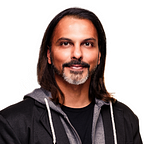Beyond Chomsky: AI and Creativity
Noam Chomsky recently referred to AI and Language Models as “plagiarism software because it doesn’t create anything, but copies existing works of existing artists modifying them enough to escape copyright laws.”
Chomsky’s critique by of artificial intelligence and language models as “plagiarism software” stems from a broader concern regarding the originality and ethical implications of AI-generated content. Chomsky, a pioneering linguist and a keen observer of societal trends, argues that these technologies merely replicate and slightly alter existing works to sidestep copyright infringement, thus lacking genuine creativity. However, this perspective, while rooted in valid concerns about copyright and creativity, may not fully encompass the potential and complexities of AI as a tool for innovation and artistic expression.
To address Chomsky’s critique, it’s crucial to understand the mechanisms of AI and language models. At their core, these systems analyse vast amounts of data to identify patterns, relationships, and structures within the information they process. This capability, far from being a mere exercise in copying, allows for the synthesis of new combinations of ideas, styles, and expressions that can transcend the sum of their parts. In the context of creativity, AI systems do not simply “copy” but recombine and innovate within the constraints of their programming and the datasets they have been trained on.
Using Generative AI to make art, poetry, and music is akin to building with LEGO blocks. The AI doesn’t plagiarise but creatively assembles. Just as LEGO builders use standard blocks to craft unique structures, AI combines existing data elements into novel creations. The blocks themselves aren’t new, but the designs they yield can be original and innovative. This process reflects not the copying of individual pieces, but the inventive assembly of those pieces into something uniquely imaginative.
Another analogy would be to imagine a chef creating a new dish by drawing inspiration from various cuisines. Similarly, AI can generate original text formats or ideas by combining familiar elements in novel ways.
Chomsky’s argument seems to rest on a traditional notion of creativity as an exclusively human attribute, characterised by the ability to produce work that is both novel and valuable. However, this perspective does not account for the collaborative nature of creativity, which has always involved building upon existing ideas and works. Just as human creativity does not exist in a vacuum, AI-generated content is part of a continuum of creative exploration, where new ideas often emerge from the recontextualization and reinterpretation of existing ones. I explore this in more depth in an earlier article: All Art is a Remix.
One of the most profound impacts of AI in the creative domain is its potential to act as a collaborative partner, expanding the boundaries of human creativity. Artists, musicians, and writers are increasingly using AI not as a replacement for human creativity but as a tool to augment their own capabilities, explore new artistic territories, and generate ideas that may not have been conceivable without the assistance of AI. This collaborative process underscores the potential of AI to enhance rather than diminish the creative landscape.
While Chomsky’s concerns about copyright and the ethical implications of AI-generated content are not without merit, they represent challenges to be addressed rather than insurmountable barriers. The development of AI in creative fields necessitates a reevaluation of our legal and ethical frameworks to ensure that they encourage innovation while protecting the rights and interests of creators. This process includes recognising the unique contributions of AI-generated works and establishing guidelines that foster ethical collaboration between humans and AI.
Chomsky’s concern is a valid one, but it’s important to view AI as a tool, not a competitor to human creativity. Used wisely, AI can spark innovation, accelerate workflows, and even challenge our very definition of originality. The future of creativity likely lies in a powerful dance between human imagination and the boundless potential of AI.
